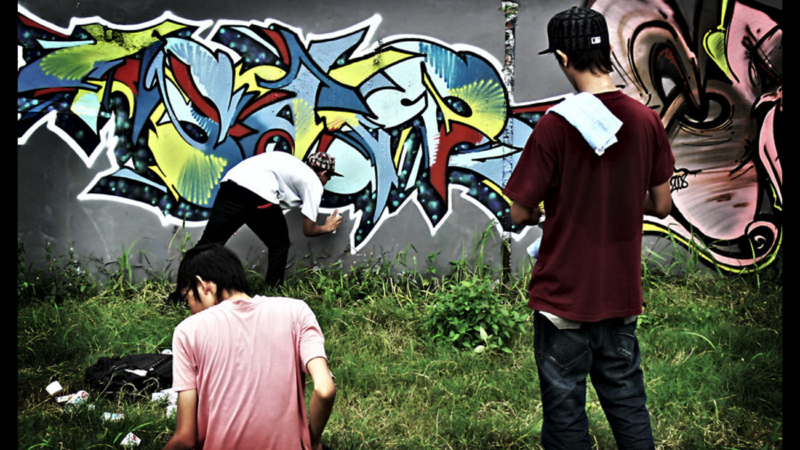The world of graffiti is changing. The vandals of the past, slathering the walls of public buildings with crude slogans and other graffiti, have given way to a new group of people who have begun to identify themselves as artists of a newly developing school: Street Art. Kirk Semple explains that “the term street art was first used in the 1980’s in reference to urban guerrilla art that was not hip-hop graffiti” (1). In fact, famous and elusive street artist known as "Banksy" demonstrated that painting the streets can be much more than just the common conception of graffiti (Banksy). In the prologue to his book, Nature’s Metropolis, historian William Cronon explains that cities are closely related to nature. “All people, rural or urban,” Cronon suggests, “share with each other and with all living and unliving things a single earthly home which we identify as the abstraction called nature” (Cronon 19). This paper will explore the role that street art plays in connecting urban and rural environments. It will argue that street artists can and should use their artwork to bring nature to the mundane, grey, bleak, walls of boring city buildings or streets. Although street art is technically illegal because it has been inaccurately categorized as graffiti, it can have a positive impact on the city by connecting rural and urban environments. For these reasons, people should promote and protect this type of art. I will develop this argument in three interrelated sections. First, I will explain the differences between street art and graffiti. Next, I will probe the specific ways that street art can improve a city. Finally, I will develop the idea that street art should be legalized and protected.
People have very different views of street art. Some people condemn it, while others condone it. But it is without question illegal, according to laws such as New York City’s 10-117 subdivision, which states: “No person shall write, paint or draw any inscription, figure or mark of any type on any public or private building or other structure . . . unless the express permission of the owner or operator of the property has been obtained” (New York City 1). Many people believe that street art and graffiti fall into the same category, that they are one in the same. However, they could not be more wrong. In his article, "Artist Driven Initiatives for Art Education: What We Can Learn From Street Art," G. James Daichendt explains that “[g]raffiti, by definition is a text-based art form that involves writing one’s name or the name of something important to the artist on a public surface” (7). He goes on to note that “street art is less concerned with letters but emphasizes the visual image, contextual use of space, and uses a wider range of materials that extend beyond the spray can” (Daichendt 7). This important distinction he makes between graffiti and street art shows how the two are fundamentally different. While graffiti is used to broadcast sometimes crude words to the world, street art is more carefully planned, more artistic, and often times displays a message for the general public. Graffiti for the sake of writing a name or phrase on a building should be illegal, because it adds to the grunge of the city, displaying a look of anarchy and unlawfulness. Street art, on the other hand, does not exhibit these unruly characteristics. Though people can argue that such art is vandalism, it can nevertheless add to the artistic appeal of a city and connect the city to nature. As a result, street art creates a happier, more productive community.
In recent news, street artists have made many positive impacts on cities around the world. A prime example is Banksy (the elusive street artist mentioned earlier), who recently staged what he called a “one month residency on the streets of New York” (Nessen). Throughout the month of October, 2013, Banksy produced a new piece of street art every day and posted a picture of the piece on his Instagram. This sent residents of New York City on a scavenger hunt to find the artwork (Nessen). Banksy’s art project benefited the city of New York by encouraging its residents to venture out to parts of the city to which they may not otherwise have gone. The project also helped build community throughout the city, as groups of citizens who admired Banksy’s artwork banded together in search of his latest piece. In an NPR piece, a Banksy fanatic related the ways that he interacted with NYC residents as they all worked toward the common goal of finding the artwork (Nessen).
In addition to building community, street art connects nature to the city. Artists often create their art out of natural materials or with nature as their subjects. In both cases, nature is brought to the city through street art. Banksy has produced art all over the world. In addition to his stint in New York, where he created many of his pieces out of natural material, such as a sphinx created out of rocks near a dump in Queens (Figure 1), Banksy also brought nature to the war-torn city of Gaza by using his artistic ability to paint on the Israel wall (Figure 2). His painting depicted two children climbing up to a hole in the wall, through which a beautiful oasis with an ocean and sand and a palm tree could be seen (Banksy). Banksy was brave enough to dodge the war zone, as well as the security guards at the Israel wall, to bring a little taste of nature to the war-torn area. The depiction of and use of nature in street art helps make the city a happier place to live in, and cheers up its residents. Psychological studies have supported this idea. They show that “people’s psychological health is associated with their relationship to nature” and that “immersion in either simulated or actual nature boost[s] vitality” in study subjects (Howell 1). This research suggests that natural art can make the city a happier place in which to live. Street artists might use natural media such as rocks, or add a real flower to a painting of the 9-11 disaster (Figure 3). They can also depict a natural subject, such as the oasis above. Regardless of their particular technique, street artists can remind residents of their connection to the natural world.
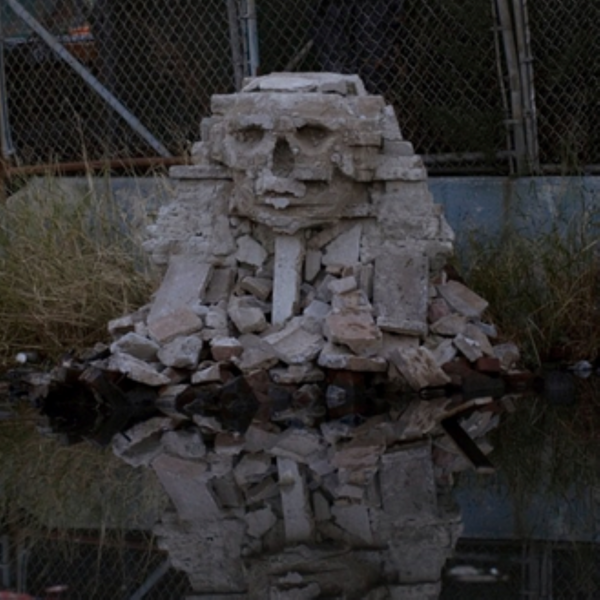
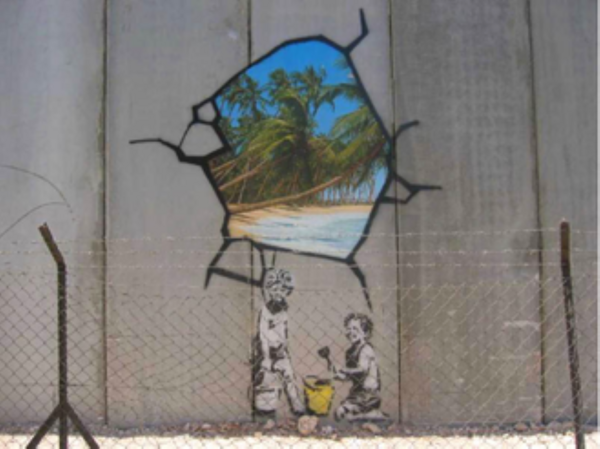
In addition to the subject or medium of the art being natural, the act of creating street art brings artists out of their studios and onto the streets⎯into nature itself. For example, a New York elementary school used sidewalk chalk to decorate the sidewalks all the way around their school with pictures of what they learned about in class, specifically natural things. The entire school chipped in, once again exemplifying how street art can bring people together and get them outside (Hershenson 1). The art brought beauty to the mundane sidewalks, at least until the next rain. This and other works of street art bring admirers and viewers out into nature. Instead of paying to visit an art gallery, the public can wander the streets and get some fresh air while enjoying local artwork free of charge.
Because this art is public and not housed in a gallery, problems of defacement and destruction arise. As the teachers at the New York elementary school explained, the chalk drawings, as with all street art, are “disposable art” (Hershenson 1). That being said, disposable art should be worn away by nature, and not by other artists or citizens. Some artists purposefully use materials that they know will decompose or break down over time to achieve a certain aesthetic, but this decomposition process should not be accelerated by other humans (Semple 1). In his piece, "The Trouble with Wilderness," Cronon argues that the wilderness is all around us. Everything we come into contact with should be treated like nature. Just because we are in a big city does not mean we can litter and harm the city environment. Cities are as much part of the wilderness as are the wild parts of the world people normally think of as wilderness (“Trouble with Wilderness” 89-90). It follows that as soon as a work of art is added to a city landscape, it becomes part of that wilderness, and that no one should harm the art. Among devoted street artists, there is “an unwritten, now largely accepted rule stat[ing] that no street artist has the right to destroy the work of another” (Anderson 115). Sadly, however, this rule is not always followed, and beautiful works of art are often washed away, painted over, or defaced by other artists’ “artwork”⎯mostly graffiti. This destruction of artwork was the subject of an NPR interview with citizens of New York who were searching for Banksy’s pieces while following his Instagram treasure hunt. The common goal among the treasure hunters was to be the first person to find the Banksy artwork. People wanted to discover Bansky’s works not only out of pride, but also because soon after the artwork was found each day, not much time went by before it was defaced or removed. Each treasure hunter emphasized the importance of “document[ing] a clean Banksy” (Nessen). An NPR blog showed many devastating examples of before and after pictures of Banksy's artwork (Figures 3, 4, 5, and 6):
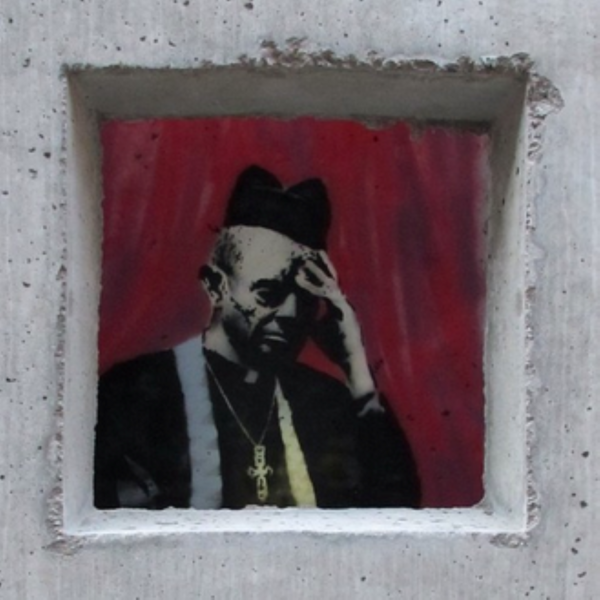
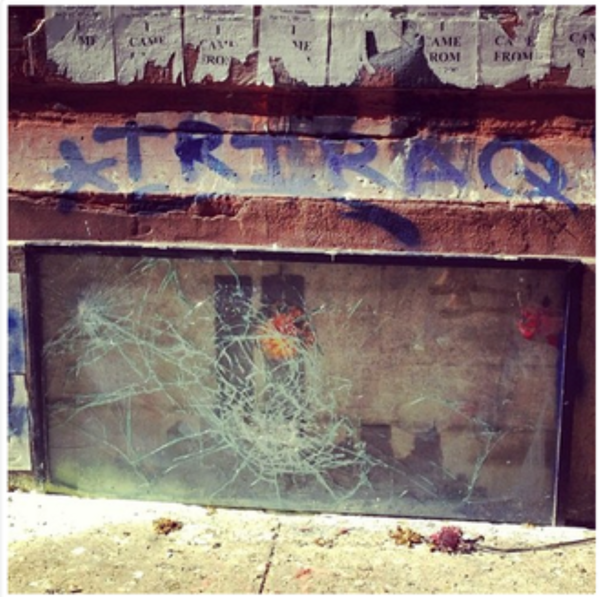
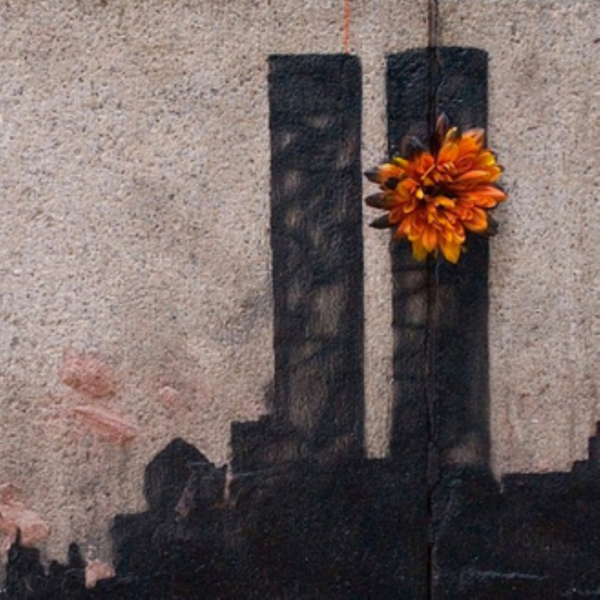
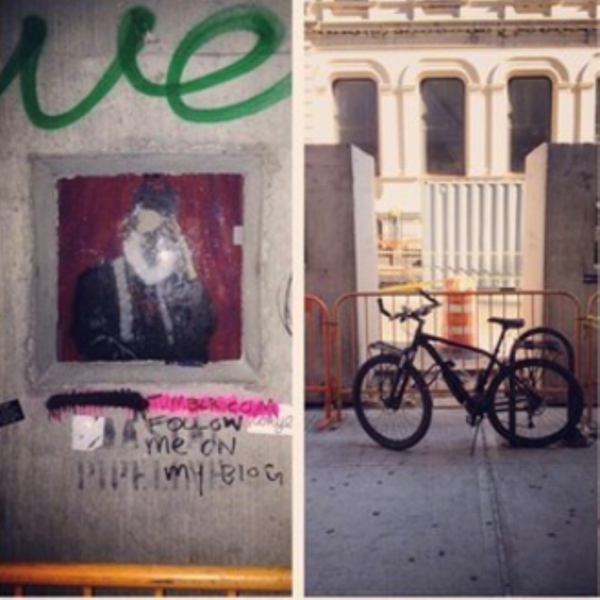
These depressing photos show the result of vandalism to the artwork (Peralta 1). The destruction and theft of these pieces of art is a very real problem. Steps should be taken to protect the art that becomes part of Cronon’s urban wilderness, because the artwork affects the city in the many positive ways mentioned above.
Although street art is illegal in most places around the world, many cities have begun to recognize the positive effects the artwork can have on their residents and city environments. As a result, many cities have supported street art by commissioning works of art for the walls of their buildings. If the cities do not commission the artwork, building owners often will. They hire artists to paint murals on the sides of their buildings to brighten the neighborhood around them. Two pictures of such murals can be seen below (Figures 7 and 8). The first image is from my hometown of Dayton, Ohio, and the second is from my current city of South Bend, Indiana. Cameron Mcauliffe argues that such creativity is important to the post-industrial economy (190). As city officials know, decorating the streets will attract tourists and improve the moods of both the producers and consumers who do business in these spaces.
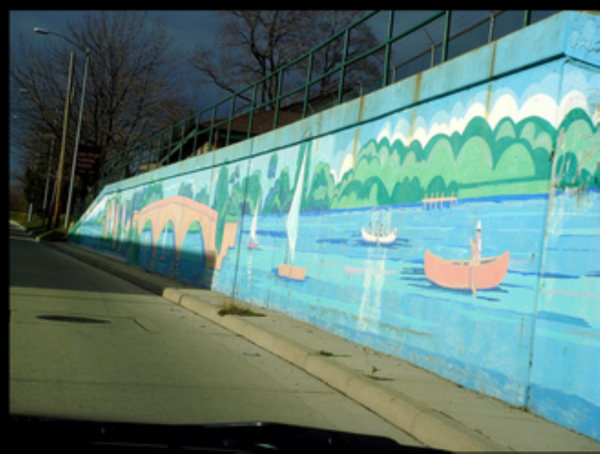
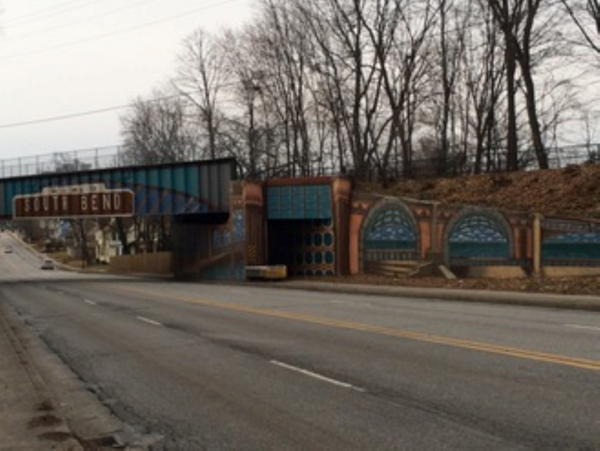
City residents have begun to get on board with street art as well. In fact, many citizens enjoy street art’s presence in their neighborhoods. As some city-dwellers have explained, “walking in the decorated streets was similar to reading a fairy tale, liberating them from the mundane experience of living in ordinary towns” (Anderson 115). This statement shows how happy street art can make the citizens of a town. In fact, in a survey asking citizens to respond to street art on their own street, 83% supported the art’s presence (Mcauliffe 190). Humans are the part of nature we often forget. We are all animals, and need to be protected and sustained as much as any other part of nature. If we live in a happier and more colorful environment, we will be more productive and positive people in general. A study of college students and their reactions to colors showed that "bright colors [like those often used in murals and other works of street art] elicited mainly positive emotional associations, while dark colors [such as gray, black, and brown, colors that often compose city buildings] elicited negative emotional associations” (Epps 1). Street artists simply try to do their part to make the world a happier place to live by bringing color and nature to the mundane city streets. As one street artist put it, “if the world is gray, we do try to color it a bit” (Anderson 115). Accordingly, these artists should be allowed to create their art and have their work protected.
In summary, though street art has garnered a poor reputation because of its origins in the vandalism of graffiti, it is fundamentally different on account of its artistic value and capacity to improve city landscapes. Once governments realize the important role that street art plays in revitalizing towns and communities, they can begin overturning laws that forbid this mode of expression. Under this scenario, we might see an explosion of street art across the globe. Conversations about street art could bring communities together and lead citizens to places of their cities they may not have ventured to on their own. The use of nature as both a medium and subject might improve city dynamics, making people happier as they recognize the nature that is all around them and their connection to that nature. More people might get up off of their couches and into the fresh air either to create or observe street art. Furthermore, if laws are passed to protect the artwork once it is put in place, artists will be assured of their place as the community improvers. They will no longer have to worry about who might vandalize their work with graffiti. These positive changes, however, can only occur if we promote and protect street art.
Works Cited
Anderson, Laurel, et al. "Symbiotic postures of commercial advertising and street art: rhetoric for creativity." Journal of Advertising Fall 2010: 113+. Business Insights: Essentials. Web. 6 Nov. 2013.
Banksy, Dir. Exit Through The Gift Shop. Prod. Jaimie D’Cruz. 2010. Paranoid Pictures, 2010. DVD.
Cronon, William. Nature's Metropolis. New York: Norton, 1991. Print.
Cronon, William. “The Trouble with Wilderness; Or, Getting Back to the Wrong Nature.” Uncommon Ground: Rethinking the Human Place in Nature. By Cronon. New York: W.W. Norton & Company Inc., 1996. 69-90. Print.
Daichendt, G. James. "ARTIST-DRIVEN Initiatives for Art Education: What we can Learn from Street Art." Art Edu 66.5 (Sep 2013): 6-12. Print.
Epps, Helen H., and Naz Kaya. "Relationship between color and emotion: a study of college students." College Student Journal 38.3 (2004): 396+. Expanded Academic ASAP. Web. 13 Nov. 2013.
Hershenson, Roberta. "It's Ephemeral, But Sidewalk Artists Have a Field Day." New York Times 7 June 1992. Business Insights: Essentials. Web. 6 Nov. 2013.
Howell, Andrew, et al. "Nature Connectedness: Associations with Well-being and Mindfulness." Personality and Individual Differences 51.2 (2011): 166-71. Print.
Mcauliffe, Cameron. "Graffiti Or Street Art? Negotiating The Moral Geographies Of The Creative City." Journal Of Urban Affairs 34.2 (2012): 189-206. Academic Search Premier. Web. 4 Nov. 2013.
Nessen, Stephen, narr. “Banksy Project Sends Fans Online To Find Art In the Streets.” All Things Considered. Hosted by Audie Cornish. NPR. 16 Oct. 2013. Radio.
New York City. "City and State Anti-Graffiti Legislation." NYC.gov. Ed. New York City. City of New York, n.d. Web. 13 Nov. 2013.
Peralta, Eyder. “SEE: Banksy’s Month (So Far) In New York City.” NPR. Ed. Kinsey Wilson. NPR, 20 Oct. 2013. Web. 28 Oct. 2013.
Semple, Kirk. "Underground Artists Take to the Streets." New York Times 9 July 2004: B1. Business Insights: Essentials. Web. 6 Nov. 2013.
Images
Figure 1: Banksy. "Queens by banksyny." Instagram. N.p., 22 Oct. 2013. Web. 6 Dec. 2013.
Figure 2: Ortner, Markus. photography of a Banksy graffiti at the Israeli West Bank
barrier in Bethlehem. Wikipedia. N.p., 2005. Web. 21 Dec. 2014.
Figure 3: Banksy. "Tribeca by banksyny." NPR. N.p., 15 Oct. 2013. Web. 14 Nov. 2013.
Figure 4: Nigam, Ambika. #banksy spotted and already hacked. NPR. N.p., 15 Oct. 2013. Web.
14 Nov. 2013.
Figure 5: Banksy. Manhattan. Concrete confessional by banksyny. NPR. N.p., 15 Oct. 2013.
Web. 14 Nov. 2013.
Figure 6: Hill, Seth. "Where'd the priest go? Banksy's Concrete Confessional last night and
this morning." NPR. N.p., 15 Oct. 2013. Web. 14 Nov. 2013.
Figure 7: Lee, Bonnie. Riverside Dr, Dayton, OH. 2008. Flickr. Photograph. 6 December 2013.
Figure 8: Zavakos, Rachel. “South Bend 933 Bridge Mural.” 2013. jpg.
